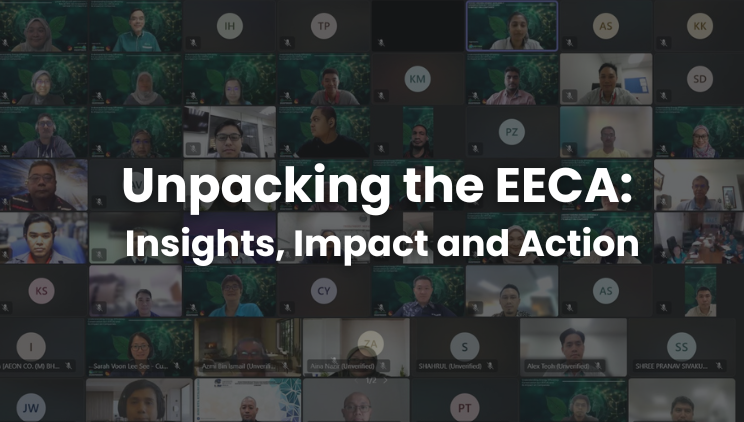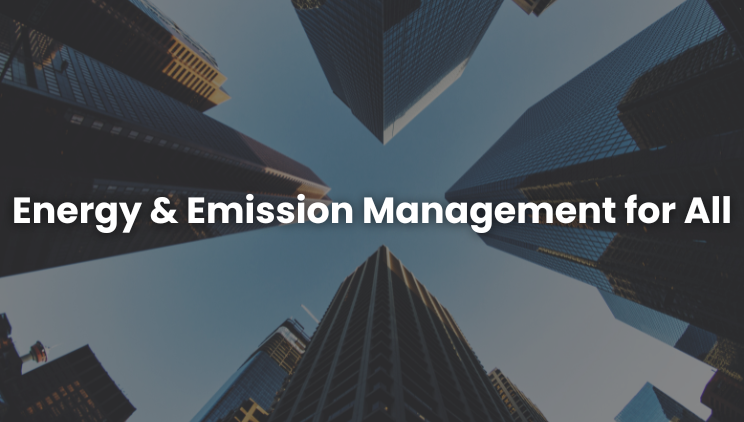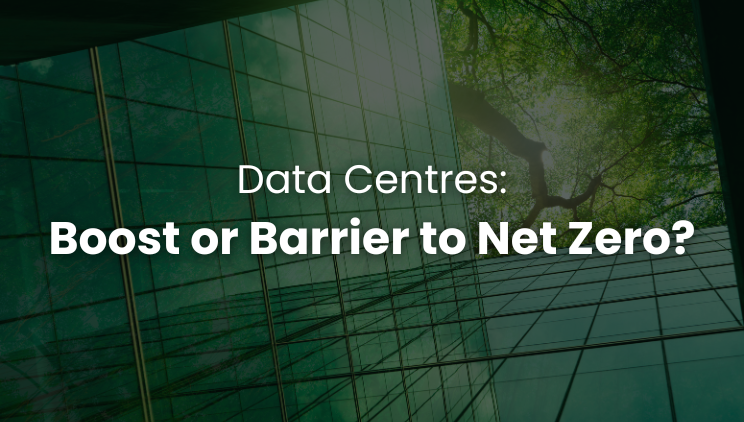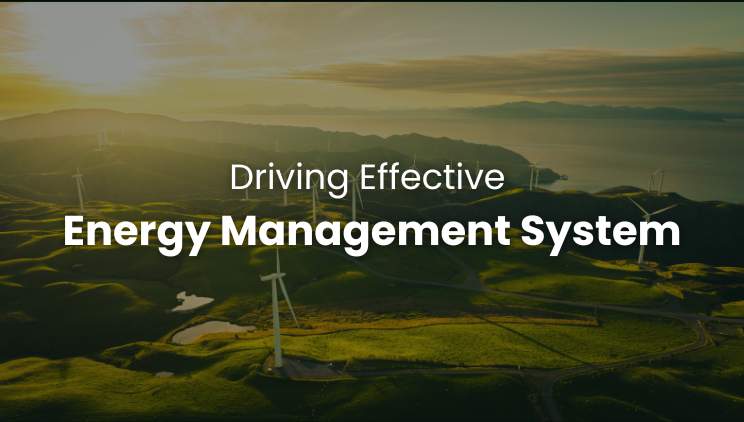
9th November 2023
Top 10 Questions on GHG Accounting and Reporting
In Article, Latest News
1. Why is GHG Accounting and Reporting important? Who is required to report GHG emissions in Malaysia?
GHG Accounting and Reporting is crucial for organizations of all sizes and industries for several compelling reasons:
- Understanding GHG Emissions Footprint: It provides organizations with a comprehensive understanding of their greenhouse gas emissions footprint, enabling them to identify emission sources, track reduction progress, and set realistic emission reduction targets.
- Identifying and Managing GHG Emissions Risks: Accurate GHG accounting and reporting help organizations identify and assess their GHG emissions-related risks, including regulatory risks, reputational risks, and financial risks. This proactive approach allows organizations to develop mitigation strategies and adapt to the evolving regulatory landscape.
- Enhancing Sustainability and Attracting Investors: GHG Accounting and Reporting demonstrate an organization’s commitment to sustainability, which is increasingly important to investors, customers, and other stakeholders. By transparently disclosing their GHG emissions data, organizations can enhance their reputation and attract investments from environmentally conscious investors.
In Malaysia, Public listed companies are mandated to report their GHG emissions under the Sustainability Reporting framework of Bursa Malaysia. This requirement is primarily driven by the growing emphasis on sustainability and transparency.
2. What is the difference between Reporting on GHG inventory and PCF?
GHG (Greenhouse Gas) inventory reporting and product carbon footprint measurement are both essential components of sustainability efforts, but they serve distinct purposes.
GHG inventory reporting aims to provide a comprehensive overview of an entity’s total greenhouse gas emissions. It encompasses the quantification of direct and indirect emissions from all scopes, covering the organization’s operations, value chain, and upstream and downstream activities. The data gathered is used to track progress towards emission reduction targets, comply with regulatory requirements, and inform investment decisions.
Product carbon footprint measurement, on the other hand, focuses specifically on the emissions associated with the production, transportation, use, and disposal of a particular product. It measures the greenhouse gas emissions “embodied” in a product throughout its lifecycle, from raw material extraction to final consumption. This information is crucial for making informed decisions about product design, sourcing, and consumer behavior.
Here’s a table summarizing the key differences between GHG inventory reporting and product carbon footprint measurement:
3. How does GHG Reporting relate to BURSA Malaysia Sustainability Reporting?
BURSA Malaysia Sustainability Reporting is a reporting framework that guides listed companies to comprehensively report on their environmental, social, and governance (ESG) performance. GHG Reporting is a key component of ESG reporting, as it provides valuable insights into an organization’s environmental impact and its efforts to address climate change.
By integrating GHG Reporting into their BURSA Malaysia Sustainability Reporting, listed companies can demonstrate their commitment to sustainability and transparency, further enhancing their reputation among investors and other stakeholders.
4. What is the duration of preparing the GHG inventory report?
The duration of preparing a GHG inventory report depends on the size and complexity of the organization. For smaller organizations with straightforward operations, preparing a GHG inventory report may take several weeks. However, for larger organizations with diverse operations and complex supply chains, the process can extend for several months.
Factors influencing the duration of GHG inventory preparation include:
- Data Availability: The availability and accessibility of relevant data, such as energy consumption records, transportation data, and waste disposal records, significantly impact the preparation time.
- Organizational Complexity: The complexity of an organization’s operations and supply chains can increase the time required to gather, analyze, and report GHG emissions data.
- In-house Expertise: The level of in-house expertise in GHG accounting and reporting can influence the duration of the process. Organizations with limited in-house expertise may need to seek external assistance, which can extend the timeline.
5. What are the reporting initiatives related to GHG?
Several international initiatives are dedicated to promoting standardized and transparent GHG reporting practices. These initiatives provide guidelines and frameworks to help organizations effectively measure, report, and verify their greenhouse gas emissions. Key initiatives include:
- The GHG Protocol: Developed by the World Resources Institute (WRI) and the World Business Council for Sustainable Development (WBCSD), the GHG Protocol provides a widely recognized framework for GHG accounting and reporting, defining scopes of emissions and methodologies for calculating GHG emissions.
- The Carbon Disclosure Project (CDP): CDP is an international non-profit organization that operates a global disclosure system for companies, cities, states, and regions to report their GHG emissions and climate change risks. CDP collects and analyzes GHG data from thousands of organizations worldwide, providing valuable insights into corporate climate action.
- The Sustainability Accounting Standards Board (SASB): SASB develops industry-specific standards for reporting on financially material ESG issues, including GHG emissions. These standards provide tailored guidance for different sectors, ensuring that GHG reporting aligns with industry-specific best practices.
- The International Integrated Reporting Council (IIRC): The IIRC promotes integrated reporting, which combines financial and sustainability information into a single report. Integrated reporting encourages companies to consider the broader environmental and social impacts of their business activities, including their GHG emissions.
- The Task Force on Climate-Related Financial Disclosures (TCFD): The TCFD is a set of recommendations developed by a group of 31 leading financial institutions to help companies disclose climate-related financial risks and opportunities. The TCFD recommendations include guidance on GHG reporting, encouraging companies to disclose their GHG emissions and related risks in a way that is relevant to investors and other stakeholders.
6. Who can verify and validate GHG Accounting and Reporting?
GHG Accounting and Reporting can be verified and validated by a qualified third-party verifier. A qualified third-party verifier is an independent organization that has the expertise to assess the accuracy and completeness of GHG emissions data, e.g., SGS Malaysia, SIRIM, Bureau Veritas Malaysia, TÜV SÜD Malaysia and Carbon Trust Malaysia.
When selecting a verifier, it is important to consider the following factors:
- Experience: Choose a verifier with experience in verifying GHG inventories for organizations in your industry or sector.
- Accreditation: Ensure the verifier is accredited by a recognized body, such as the International Environmental Accreditation Network (IEAN) or the International Accreditation Forum (IAF).
- Expertise: Choose a verifier with expertise in the specific GHG accounting standards and methodologies that your organization is using.
- Cost: Obtain quotations from multiple verifiers to compare pricing and services.
- Communication: Consider the verifier’s communication style and ability to provide clear and concise explanations of the verification process.
7. What should I prepare for, prior to getting my report verified?
Before getting your GHG Accounting and Reporting verified, ensure you have adequately prepared for the verification process. This includes:
- Data Collection: Gather all necessary data for your GHG inventory, including energy consumption records, transportation data, waste disposal records, and any other relevant information.
- Methodology Development: Develop a clear and consistent methodology for calculating your GHG emissions. The methodology should be aligned with recognized standards and guidelines, such as the GHG Protocol.
- Report Preparation: Prepare a comprehensive GHG inventory report that includes detailed descriptions of data sources, calculation methods, emissions factors, and any assumptions made.
- Internal Review: Conduct an internal review of your GHG inventory report to ensure accuracy, completeness, and consistency.
- Verifier Selection: Select a qualified third-party verifier that has the expertise and experience relevant to your industry and sector.
- Communication and Coordination: Communicate openly and proactively with the verifier throughout the verification process, providing necessary information and addressing any concerns promptly.
8. Does BURSA Malaysia require GHG Accounting and Reporting to be verified and validated by a certain body?
- While BURSA Malaysia does not mandate third-party verification of GHG Accounting and Reporting, it strongly encourages listed companies to have their GHG emissions data verified by a qualified third-party verifier. This demonstrates the company’s commitment to transparency and the accuracy of its GHG emissions data.
- Third-party verification enhances the credibility of GHG emissions data and provides assurance to investors, stakeholders, and regulators that the data is reliable and compliant with relevant standards.
9. When do I need to verify and validate GHG Accounting and Reporting?
Organizations should consider verifying and validating their GHG Accounting and Reporting under the following circumstances:
- Initial GHG Inventory: For organizations preparing their first GHG inventory, verification provides confidence in the accuracy and completeness of the data and the methodology used.
- Significant Changes: If there have been significant changes in an organization’s operations, emissions factors, or data sources, verification ensures that the GHG inventory remains accurate and reflects the current situation.
- Regulatory Requirements: If regulations require third-party verification of GHG emissions data, organizations must comply with these requirements to maintain regulatory compliance.
- Stakeholder Expectations: If investors, customers, or other stakeholders expect verified GHG emissions data, verification demonstrates the organization’s commitment to transparency and accountability.
- Continuous Improvement: Regular verification can help identify areas for improvement in GHG data collection, methodology, and overall emissions reduction efforts.
10. How do we facilitate GHG and PCF accounting, development of inventory and reporting?
At OPTIMISE, we provide comprehensive solutions to help businesses of all sizes and industries navigate the complexities of GHG and product carbon footprint accounting, development of inventory, and reporting. Our experienced team of experts will work closely with you to:
Establish a Robust GHG and Product Carbon Footprint Accounting Framework:
We’ll guide you in defining the scope of your GHG and product carbon footprint accounting, identifying the direct and indirect emissions to be included, and selecting the appropriate methodology for calculation.
a. Collect and Analyze Relevant Data:
We’ll assist you in gathering accurate and consistent data from various sources, including energy consumption records, transportation logs, waste disposal records, and product manufacturing processes.
b. Perform Detailed Emissions Calculations:
Using the chosen methodology and the gathered data, we’ll conduct detailed calculations of your GHG emissions, ensuring transparency, traceability, and reproducibility.
c. Prepare Comprehensive Inventory Reports:
We’ll compile comprehensive inventory reports that clearly document your GHG emissions data, calculation methods, emission factors, and assumptions made.
d. Obtain Third-Party Verification:
To enhance credibility and assurance, we’ll guide you through the process of obtaining third-party verification for your GHG and product carbon footprint data.
e. Integrate with Sustainability Reporting:
We’ll help you integrate your GHG and product carbon footprint data into your overall sustainability reporting, demonstrating your commitment to environmental responsibility.
f. Set Emission Reduction Targets:
Based on your inventory data, we’ll assist you in establishing realistic and achievable emission reduction targets by using Science Based Target (SBTi), aligning them with your sustainability goals.
g. Develop Action Plans for Emissions Reduction:
We’ll work with you to develop comprehensive action plans that outline specific strategies and measures to achieve your emission reduction targets.
h. Monitor and Track Progress:
We’ll help you establish a system for monitoring and tracking your progress towards emission reduction targets, ensuring continuous improvement.
i. Engage Stakeholders and Promote Transparency:
We’ll guide you in effectively communicating your GHG and product carbon footprint data and reduction strategies to stakeholders, fostering transparency and accountability.
j. Utilize Technology for Efficiency:
We’ll recommend and assist in implementing technology solutions to automate data collection, calculations, and reporting, enhancing efficiency and accuracy.
k. Provide Expert Guidance and Support:
Throughout the process, our team of GHG experts will provide your team with tailored guidance, support, and verification services to ensure compliance, accuracy, and credibility.
By partnering with us, you can gain access to our expertise, resources, and proven methodologies to effectively manage your GHG and product carbon footprint, demonstrate your commitment to sustainability, and contribute to a greener future.
Register to join our GHG training programs or contact us to arrange for an in-house training and to learn more about how to apply ISO14064:2018 and the GPC for your community and organisation.
📧Email to us: [email protected]
📲Training Inquiry: http://wa.link/ypkabf
💻FB & LinkedIn: 𝗢𝗽𝘁𝗶𝗺𝗮𝗹 𝗦𝘆𝘀𝘁𝗲𝗺𝘀 𝗘𝗻𝗴𝗶𝗻𝗲𝗲𝗿𝗶𝗻𝗴
This article is published on 9th November 2023 by Optimal System Engineering




